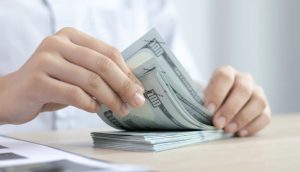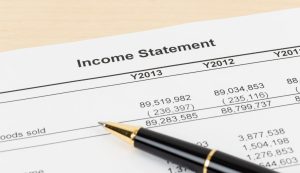Do I Have to Declare Self Employed Income Under £1000?
Self-employment in the UK offers flexibility, independence, and the opportunity to earn on your terms. However, tax obligations can often seem complex, especially when earnings are below £1,000.
Many individuals wonder whether they need to declare self-employed income under £1,000 and what rules apply to them. The £1,000 trading allowance is designed to simplify tax obligations for small earners.
While it allows individuals to earn up to this amount without paying tax, certain conditions may still require income declaration to HMRC.
This guide breaks down whether you need to declare self-employed earnings under £1,000, when tax registration is necessary, and how the allowance affects your tax responsibilities.
What Does It Mean to Be Self-Employed in the UK?

Being self-employed means working for yourself rather than being employed by a company or organisation.
In the UK, HMRC defines a self-employed person as someone who runs their own business, takes full responsibility for its success or failure, and is not paid through PAYE (Pay As You Earn).
Key characteristics of self-employment include:
- Having control over how, when, and where you work.
- Providing goods or services to multiple clients.
- Taking responsibility for business expenses and financial risks.
- Completing work using personal tools, equipment, or resources.
Common types of self-employment include freelancing, consulting, contracting, and sole trading. Even if you sell goods online, provide services, or do gig work, you might be considered self-employed.
To operate legally, self-employed individuals must ensure they meet tax and National Insurance obligations. This includes registering with HMRC when required and declaring income correctly, depending on the amount earned.
What Is the £1,000 Trading Allowance for Self-Employed Individuals?
The £1,000 trading allowance is a tax-free allowance provided by HMRC to simplify tax obligations for small-scale self-employed individuals.
It applies to individuals earning money from self-employment, side businesses, or occasional freelance work.
Key Points About the Trading Allowance
- It allows individuals to earn up to £1,000 per tax year without needing to report it to HMRC.
- It applies to self-employment, gig economy work, and online sales.
- If total self-employed earnings exceed £1,000, individuals must declare the full amount.
- Individuals cannot claim the trading allowance if they deduct business expenses instead.
This allowance helps those with occasional or small-scale income avoid unnecessary tax paperwork.
However, it’s essential to understand when income must still be declared, even if tax is not owed.
Do I Have to Declare Self Employed Income Under £1000?
If your total self-employed income is below £1,000 per tax year, you do not need to register for self-assessment or declare it to HMRC. The trading allowance automatically applies, meaning no tax return is required.
Situations where you must declare your income, even if under £1,000:
- If you are already registered for self-assessment and need to report all earnings.
- If you earn other income that pushes your total taxable earnings above the personal allowance (£12,570 for 2023/24).
- If you wish to claim expenses instead of the trading allowance.
- If HMRC specifically requests that you file a tax return.
Even if you don’t need to declare the income, keeping records of earnings is advisable in case of future tax reviews or changes in income levels.
When Do You Have to Declare Self-Employed Income to HMRC?

You must declare your self-employed income to HMRC if your total earnings from self-employment exceed £1,000 in a tax year.
This means you need to register for self-assessment, even if you have another source of income through employment or other means.
Additionally, if you receive property rental income, dividends, or any other taxable income that requires a self-assessment tax return, you must include your self-employed earnings as well.
How to Register for Self-Assessment?
- Visit the HMRC website and sign up for self-assessment.
- You will receive a Unique Taxpayer Reference (UTR) after registration.
- Submit a self-assessment tax return annually, detailing your income and expenses.
Key Tax Deadlines
- 5 October: Deadline to register as self-employed.
- 31 January: Deadline to submit the online tax return and pay any due tax.
Failing to register or submit your tax return on time can result in penalties and interest charges on unpaid tax. It is crucial to keep accurate records of income and expenses to ensure compliance with HMRC regulations.
What Happens If You Earn Over £1,000 from Self-Employment?
If your total self-employed income exceeds £1,000 within a tax year, you must declare it to HMRC by registering for self-assessment.
This means that even if your profit after expenses is minimal, you must still report it if your total income before deductions is above the threshold.
Tax Implications
Once your earnings exceed £1,000, you may be required to pay:
- Income Tax: Only payable if your total annual taxable income (including employment and self-employment earnings) exceeds £12,570.
- National Insurance Contributions (NICs): If profits exceed certain limits, Class 2 and Class 4 NICs may apply.
Steps to Follow
- Register with HMRC as self-employed.
- Track and record your income and expenses accurately.
- Submit a self-assessment tax return by 31 January each year.
Ignoring these responsibilities can result in penalties, interest charges, and potential HMRC investigations. Ensuring compliance by declaring your earnings on time is crucial to avoid unnecessary fines.
How Does the £1,000 Trading Allowance Affect Taxable Income?

The £1,000 trading allowance provides a tax-free threshold for small-scale self-employed individuals, allowing them to earn up to £1,000 without needing to register or declare their income.
However, if your self-employment income exceeds this amount, you must choose between using the trading allowance or deducting business expenses when calculating taxable income.
Two Options for Tax Calculation
1. Use the Trading Allowance
- If total self-employed income is under £1,000, no tax declaration is required.
- If income exceeds £1,000, you can deduct £1,000 tax-free, and the remaining balance is taxable.
2. Deduct Business Expenses Instead
- If your business expenses exceed £1,000, it is better to deduct them instead of claiming the trading allowance.
- Expenses include equipment costs, travel expenses, and office supplies.
Choosing the best approach depends on whether your actual expenses are higher or lower than £1,000. Keeping detailed financial records helps determine the most tax-efficient strategy.
Do You Need to Pay National Insurance on Self-Employed Income?
National Insurance Contributions (NICs) apply to self-employed individuals based on their annual profits.
These contributions help fund state benefits such as the State Pension, Maternity Allowance, and certain benefits for the unemployed or ill.
NIC Thresholds for Self-Employed Individuals
- Class 2 NICs: Payable if self-employed profits exceed £12,570 per year. The standard rate is £3.45 per week (2023/24 rates).
- Class 4 NICs: Payable on profits above £9,880 per year at a rate of 9% (2023/24 rates) on earnings up to £50,270, and 2% on earnings above this amount.
What If You Earn Below the Threshold?
- If profits are below £12,570, you do not have to pay NICs but can make voluntary Class 2 contributions to protect your State Pension eligibility.
- If you miss contributions, you may receive a lower State Pension or be ineligible for certain benefits.
Keeping track of NIC payments ensures compliance with HMRC rules and protects long-term financial benefits.
What If You Earn Self-Employed Income Alongside a Full-Time Job?

Many individuals work full-time while running a side business, but this affects their tax responsibilities. If you earn self-employed income alongside a PAYE (Pay As You Earn) job, you must declare your earnings correctly.
How Tax Is Calculated for Side Income?
- PAYE applies to your salary from your full-time job, where tax and NICs are deducted automatically.
- Self-employed income is taxed separately through self-assessment, where you must file a tax return to HMRC.
- The trading allowance still applies, so if your self-employed income is under £1,000, you may not need to report it.
Key Points to Remember
- You must declare self-employed income over £1,000 to HMRC.
- If your total taxable income exceeds £12,570, you may have additional tax obligations.
- National Insurance contributions may be affected, as self-employed earnings are assessed separately from PAYE income.
Failing to report side business income could lead to HMRC penalties, so it’s essential to file self-assessment tax returns on time.
What Are the Penalties for Not Declaring Self-Employed Income?
If you fail to declare self-employed income to HMRC, you may face penalties, fines, and even legal consequences.
HMRC has strict rules for late registration, incorrect tax filings, and unpaid tax liabilities.
Penalties for Non-Compliance
- Late registration fine: If you fail to register as self-employed by 5 October following the end of the tax year, HMRC may charge a penalty starting at £100.
- Failure to declare income: If HMRC discovers undeclared self-employment income, you could face investigations, audits, and fines based on the amount owed.
- Interest on unpaid tax: Any unpaid tax will accrue interest and additional late payment penalties, increasing your overall liability.
How to Avoid Penalties
- Register as self-employed on time to ensure compliance.
- Keep detailed financial records of income and expenses.
- Submit your self-assessment tax return before 31 January to avoid fines.
Ignoring tax responsibilities can lead to costly consequences, so staying up to date with HMRC rules is essential.
How Do You Report Self-Employed Income to HMRC?

If your self-employed earnings exceed £1,000 per tax year, you must declare them to HMRC by filing a self-assessment tax return.
Steps to Report Your Income
- Register as self-employed with HMRC and receive your Unique Taxpayer Reference (UTR).
- Keep records of all self-employed earnings, invoices, and business expenses.
- Log into the HMRC self-assessment portal to complete your tax return.
- Enter total income and any allowable business expenses to calculate taxable profits.
- Submit the tax return online by 31 January (for online returns) or 31 October (for paper returns).
- Pay any tax and National Insurance contributions due by the 31 January deadline.
Key Considerations
- If your self-employed income is below £1,000, you may not need to file a tax return unless you are already registered for self-assessment.
- You can choose to use the trading allowance or deduct business expenses—whichever method is more tax-efficient.
- Late filing or incorrect reporting can result in penalties from HMRC.
Following these steps ensures tax compliance and prevents unexpected fines.
Conclusion
Understanding whether to declare self-employed income under £1,000 is crucial for complying with HMRC rules.
The £1,000 trading allowance simplifies tax responsibilities for small earners, but those exceeding this limit must register for self-assessment and report income correctly.
If you are self-employed alongside a full-time job, different tax rules apply, with PAYE and self-assessment handled separately. National Insurance obligations may still arise based on total earnings.
To avoid penalties, it’s important to understand tax thresholds, file returns on time, and keep accurate records. Seeking professional tax advice can help manage self-employment income correctly.
Frequently Asked Questions (FAQs)
Can I work self-employed without registering with HMRC?
Yes, if your total self-employed income is under £1,000 per tax year, you don’t need to register. However, you must register if earnings exceed this threshold.
Do I have to pay tax if I only earn £500 from self-employment?
No, as self-employed earnings under £1,000 fall within the trading allowance. However, if you have additional taxable income, a tax return may be required.
Is the trading allowance different from the personal tax-free allowance?
Yes, the trading allowance applies only to self-employed income, while the personal tax-free allowance covers total income, including employment earnings.
What if my self-employed income varies each year?
If your earnings exceed £1,000 in any tax year, you must declare them to HMRC. If they remain below this amount, you don’t need to register.
Does the £1,000 trading allowance apply to rental income?
No, rental income has a separate £1,000 property allowance. The trading allowance only applies to self-employment and casual earnings.
How do I check if I need to file a tax return?
You can use the HMRC self-assessment tool or contact HMRC to confirm. If your total taxable income exceeds £12,570, a tax return is usually required.
What if I already have a full-time job and earn self-employed income?
You must declare self-employed earnings over £1,000, even if you pay tax via PAYE. Additional income must be reported through self-assessment.







